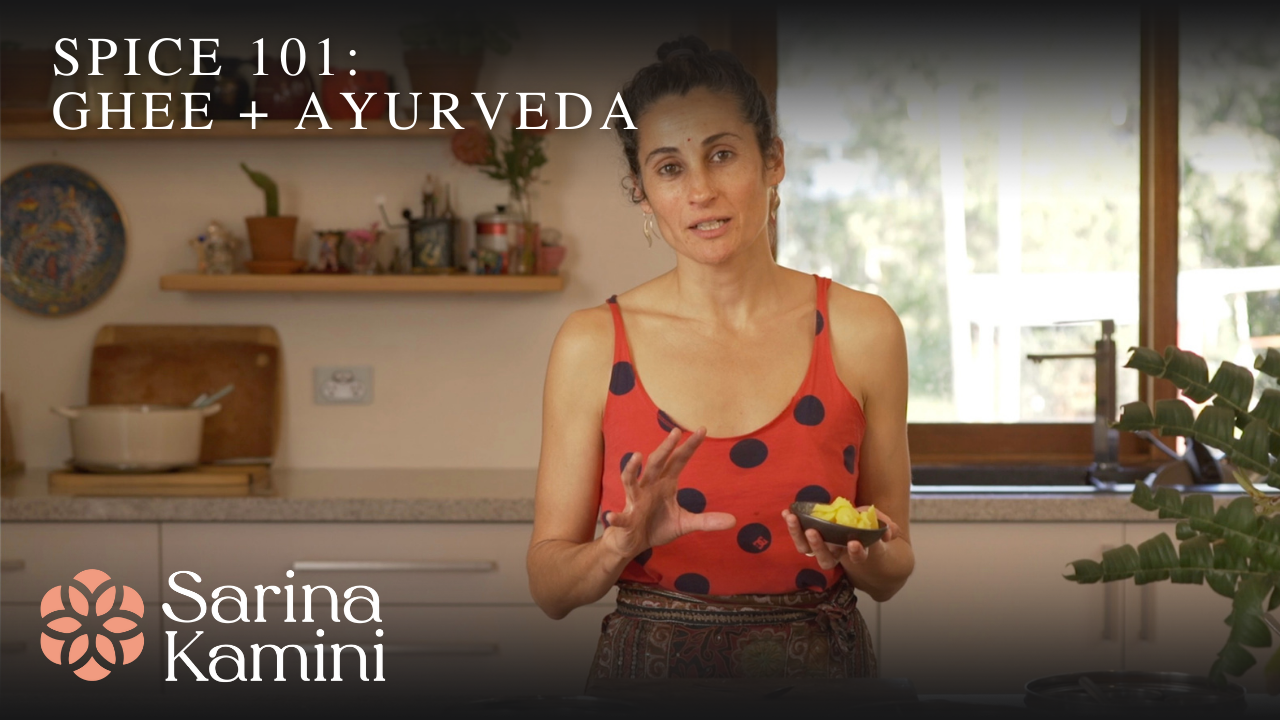
Ghee is my go-to fat for a lot of reasons: it’s delicious, it runs all aromatics through a filter of sweet, soft digestibility and it creates a creamy bed of texture that strong masala adores. One of ghee’s other pertinent qualities is its ability to allow both the sensory and the emotional body to hold two opposing states simultaneously: contrast and comfort. Learning how to hold opposing states through spice is a powerful way to begin to understand how we can move through difficult circumstances and still find ourselves steady in the process. Read on below for a little more information on how to use ghee. Or watch here to find out a little about ghee’s taste quality and how to use this versatile fat.
GHEE:
The process is making ghee means it has a very low lactose content - some people who react to lactose in butter find they can use ghee as a replacement with no adverse reactions.
The way that the mouth experiences taste influences our body’s emotional reaction to food: striking flavours will drive excitement, heavy flavours will settle. I use ghee to smooth out contrast in ‘difficult’ masalas when I know the contrast is going to be strong for my feeling body, even if my physical body is in need of the structure and pungency.
Ayurveda considers ghee a sattvic food. Sattvic foods promote balance for all body types across all seasons, making ghee a universally accessible fat. A side note: ghee is not an immediate re-balancing agent - it won’t put right physical difficulty immediately but over time contributes to a healthy and whole system.
I combine ghee with mustard oil when I want to make use of ghee’s softening qualities while still propelling spice forward with heat and shadow.
I combine ghee with coconut oil when I want to make use of ghee’s lullaby quality on the mouth, but still allow an experience of joy and aromatic levity.

